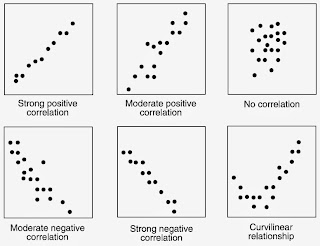
We are very excited to announce that our Strategic Management program has now been officially launched. eZSigma is now offering two streams of work within the Strategic Management program: consulting and training. More information can be found on our website (see link on the right hand side). We would like to take advantage of this opportunity to address the methodology behind our new offering: Balanced Scorecard (BSC). Although it is nearly impossible to touch on all aspects of BSC in one post, we hereby address the main idea behind this powerful approach to managing organizations. The BSC methodology was created in the early 90's by two Harvard professors - Norton and Kaplan. The main idea behind the BSC is that a firm should not only be concerned about its financial achievements but rather, it should seek excellence in other areas that will ultimately support the company in achieving its financial performance. The approach did break a paradigm in a sense that it supports the concept that no longer a firm would be focused on and concerned about its financial performance only. The methodology calls for a few critical points:
1. The translation of the strategic mandate into operational metrics
2. The alignment between operational metrics and the company's strategic objectives
3. The causal relationship among the four perspectives (briefly described below)
4. The spread of accountability and autonomy to all employees ("everyone's job")
The BSC method is built upon four perspectives: financial, customers, internal processes, and learning and growth. There are variations of these perspectives, mainly in the wording, but these four are easily found in any BSC development in any industry. The four perspective are:
Financial: Norton and Kaplan do not disagree that firms can only move forward and reinvest in themselves through monetary funds. But financial performance can only happen with satisfied customers. For not-for-profits, revenues are still important for the organization's further development and the BSC approach can also be applied.
Customers: simply put, no company can survive without customers, and no company can thrive without satisfied customers. The BSC approach calls for attention when it comes to keeping your customers happy. In turn, these customers will continue to do business with the company and provide it with earnings longevity. As a side note, depending on the type of company and industry, the BSC practitioner can be dealing with internal and/or external customers (the next step in a process or the final consumer).
Internal processes: no customers can be satisfied through processes that lack quality in them. Pursuing excellence in any internal process - be it in a manufacturing setting or at a service organization, is the key to customer satisfaction. The previous post on cost of quality touched on the various ways that the lack of excellence in processes can contribute to customers' dissatisfaction.
Learning and growth: companies are made out of people. Processes and products, even those that are highly automated demand people to control and operate them. Engaged, well trained, and committed employees are the foundation of the firm's ultimate success. Think about the best products available on the market today. They were designed by people, they were created by people, they were advertised by people's minds.
The visual aid used in the BSC approach is the Strategy Map which we will address in another post eventually. We hope that this post has given the readers a glimpse of what this powerful approach can do in any organizational setting. As usual, we are available to discuss how this and other eZSigma's programs can transform your organization in a excellence-driven one.











